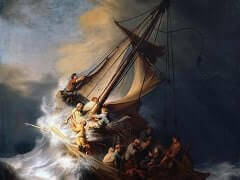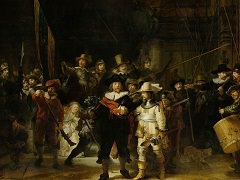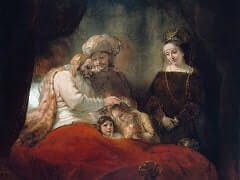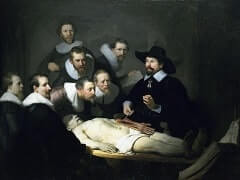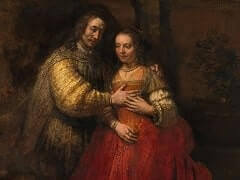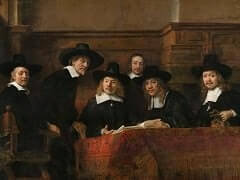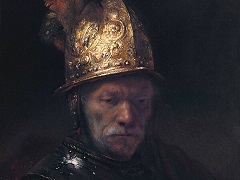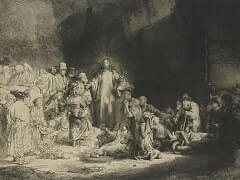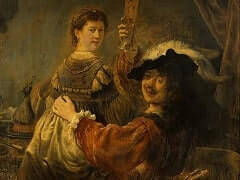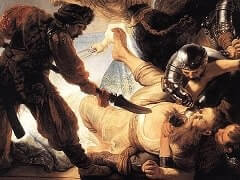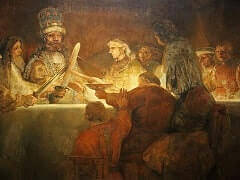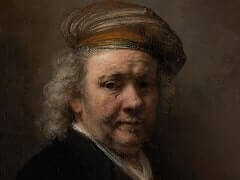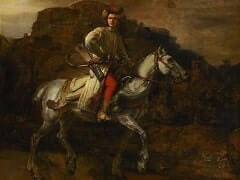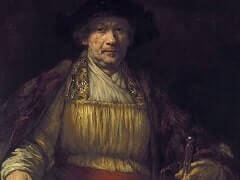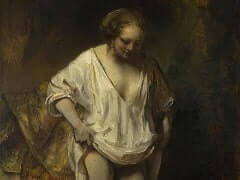Self-Portrait with Two Circles, 1655 by Rembrandt

In Self-Portrait with Two Circles, Rembrandt holds his palette, brushes, and maulstick. The painting is notable for its monumentality and the enigmatic background consisting of a shallow space with the fragments of two circles. This is one of more than 40 self-portraits Rembrandt painted (as well as a similar number in other media) and one of a number of depictions in several media dating at least from 1629 that show him at work drawing, etching, or painting. He wears a fur-lined robe, beneath which is a red garment. On his head is a white hat, similar to that worn in several other late self-portraits. Unlike other late self-portraits, in Self Portrait with Two Circles, Rembrandt, with one hand on his hip, appears confrontational and even defiant. The impression is that of a master solemnly asserting his genius.
As in many of the artist's late works, the painting is characterized by an improvisational handling, with details that read as unfinished. There are areas, such as the face and the right side of the hat, where a gray layer of paint has been used as a tonal middle ground, upon which bold lights and rich dark accents have been added, sometimes with rapid strokes of paint applied wet-into-wet.
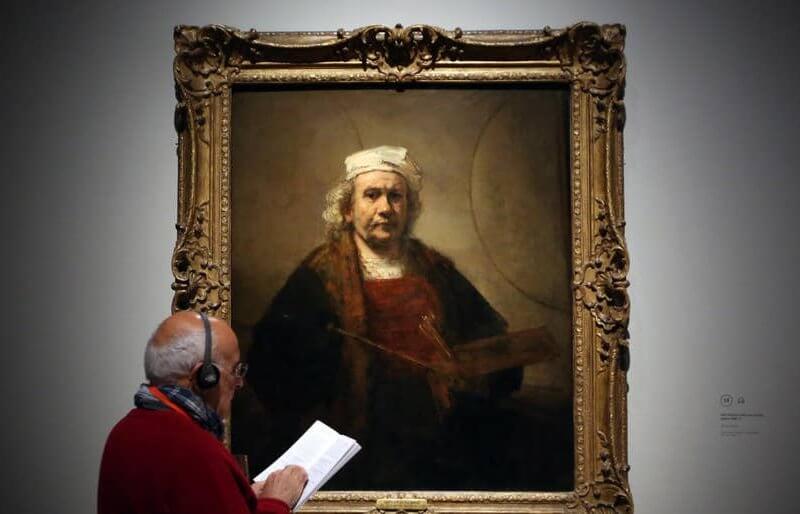
In several places, Rembrandt "drew" into the paint while it was still wet, incising lines in the mustache, left eyebrow, and shirt collar. The hands, palette, brushes, and fur lining of the artist's gown, or tabbaard, were painted with great rapidity. Whether Rembrandt intended to more fully finish these areas is not known, but the painting's overall forcefulness renders concern for its completion superfluous. Subsequent generations of artists appreciated the unfinished passages: Joshua Reynolds commented on its "very unfinished manner", but found it "admirable for its colour and effect," and Jean-Honoré Fragonard made a painted copy of it. That Rembrandt may not have considered the work complete is suggested by the omission of his signature and date, unusual for a self-portrait by the artist. Alternatively, it is possible that Rembrandt's intent was to leave an iconic biographical image for posterity, more profound than a traditional self-portrait.

